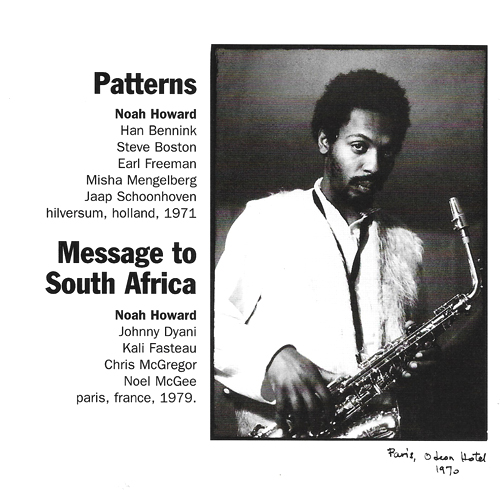Tracks
- Patterns – 36:24
- Message to South Africa – 18:26
About the album
Recording Patterns: Hilversum, Holland, October 1971
Recording Message to South Africa: Paris, France, 1979
Label: Eremite – Eremite MTEO19
Recorded with
Patterns:
Han Bennink – drums/percussion/Tibetan horn
Steve Boston – congas
Earl Freeman – bass
Misha Mengelberg – piano
Jaap Schoonhoven – guitar
Message to South Africa:
Johnny Dyani – bass/vocals
Kali Fasteau – sheng/vocals
Chris McGregor – piano
Noel McGee – drums


